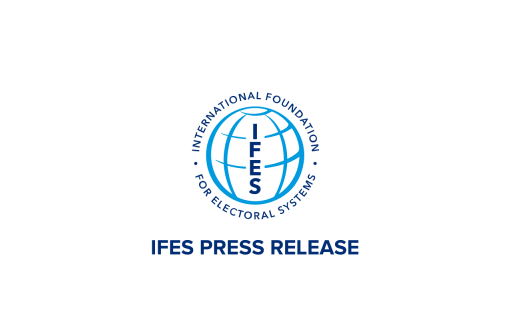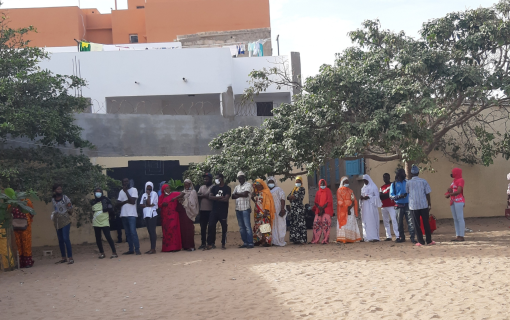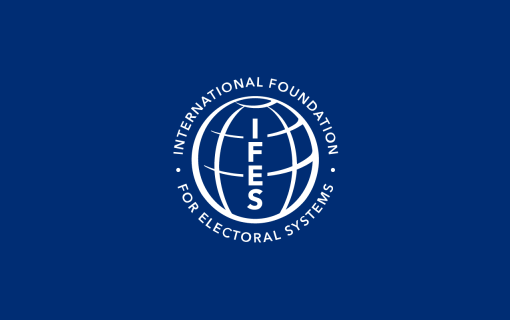
Taking Stock of Uganda’s 2016 General Elections
On February 18, Uganda held general elections for President and Parliament. More than 10.3 million Ugandan citizens cast their votes at 28,010 polling stations across the country, with voter turnout reaching 63.5 percent – a significant increase from the 57.1 percent turnout during the country’s 2011 general elections. Largely peaceful, the elections were one of the most competitive in Ugandan history. Incumbent President Yoweri Museveni won the presidential contest with 60.75 percent, defeating a field of seven other contenders that included leading opposition candidate Kizza Besigye, who finished in second with 35.37 percent. Uganda’s Election Commission (EC) has not yet released the results for the parliamentary contest; per the 2005 Elections Act, the EC will announce these results as soon as is practicable.
Although Uganda avoided the electoral violence that many feared – as well as the large-scale malfeasance that defined previous polls – some domestic and international actors reported a number of procedural and political problems. The elections also included some positive developments, including the successful deployment of new and important election technologies and a 1.3 million increase in the total number of registered voters relative to the 2011 elections. The EC will seek to build upon these advancements as it prepares for upcoming by-elections in the near future – however, it will do so amid a difficult post-election environment.
Why are these elections important?
Uganda’s National Resistance Movement (NRM), led by President Museveni, has dominated Ugandan politics since its founding in 1986. However, after the 2005 referendum re-introduced multi-party politics, national elections have become more competitive as the opposition strengthened its grassroots organization and the NRM itself began to display signs of infighting and moderate fragmentation – including the defection of former NRM Secretary General Amama Mbabazi, who then chose to run for President in 2016 under a different party banner. President Museveni therefore viewed the 2016 election as an opportunity to re-assert the NRM’s political dominance and achieve a third consecutive presidential term since Parliament removed term limits in 2005.
These elections were also a chance for the opposition to re-establish electoral significance after a setback in 2011, when the primary opposition leader Kizza Besigye received only 26 percent after a much stronger 37 percent showing in 2006. Besigye’s party, the Forum for Democratic Change, also suffered a weaker showing in 2011, while other opposition parties made only moderate parliamentary gains of between one and four seats. The 2015 defection of Mbabazi therefore raised hopes that the opposition might strengthen its grassroots influence and perhaps even form a more coherent, united front. However, internal mistrust and lingering rivalries ultimately prevented the various opposition movements from coalescing around a single presidential candidate.
Given Uganda’s prior electoral challenges, many within civil society and the opposition called for significant electoral reforms in the years leading up to the election. These recommendations included disbanding the EC and changing the nomination process for its Commissioners, which, under the existing constitution, allows the President to nominate and the Parliament to approve. Many key actors claim that this process is exclusive, lacks transparency, and increases the EC’s vulnerability to influence from the President and the NRM. However, despite a lengthy debate over such reforms in Parliament, no action was taken prior to the 2016 election.
How was the political environment and security situation before and during the election?
The pre-election period was tense with periodic reports of intimidation of opposition activists. Some opposition rallies were shut down and the leading opposition candidate, Kizza Besigye, was arrested multiple times. Besigye was also placed under house arrest during and after Election Day, under the pretext of taking preventive measures to avoid instability and violence. On a legal level, the relatively weak regulatory framework for campaign finance enabled campaign spending on a scale never before witnessed in Uganda. Some accused President Museveni and the ruling NRM of improperly using state funds and resources for campaign activities. Moreover, the EC itself was the subject of criticism by some actors for its purported lack of independence from the NRM.
However, although many civil society groups and the opposition criticized the political environment, the election period was relatively peaceful. On Election Day, more than 150,000 police‚ soldiers and other security forces were deployed throughout the country to ensure the safety and security of election staff and the more than 10 million Ugandans that stood in line to vote. Before the election, the police also reportedly trained up to 1.5 million civilians – primarily male youth – to provide additional support for public order during Election Day. This move was criticized by some as an attempt to deploy additional pro-regime “officials” to intimidate voters. On the other side, the opposition Forum for Democratic Change (FDC) also created youth groups, called Power 10, with the sole purpose of protecting the FDC’s votes on Election Day. Despite these concerns and documented cases of intimidation by the security forces and to a certain extent the opposition, Uganda largely avoided electoral violence before and during the poll.
What role did the International Foundation for Electoral Systems (IFES) play in supporting these elections in Uganda?
IFES has worked to strengthen electoral processes and credibility in Uganda since 2011, with funding from the U.S. Agency for International Development.
For the 2016 elections, IFES built upon our previous support to further strengthen electoral technologies, promote widespread voter participation in the process, and improve electoral integrity. Specifically, IFES supported the EC to activate an interactive SMS platform to allow citizens to check and verify their polling station locations. More than 1.1 million voters sent a message into the EC’s SMS platform and received an immediate automated response with location information for the requester’s polling station. This system helped to increase turnout and reduce Election Day confusion, particularly since all social media sites were blocked during the election. Upon request from the EC, IFES also developed a web application to expand the capabilities of the commission’s web-based voter register, which allowed voters to check on their polling station locations and view the online national voter register by polling station (or download the register, if needed). Finally, recognizing the paramount importance of voter education – given new technologies and the desire to increase turnout – IFES also assisted the EC to develop voter education materials and disseminate them through 34 radio stations, nine newspapers, widespread posters and leaflets, and online.
How was the overall conduct of the 2016 general elections?
Despite the tense political environment, more than 10 million Ugandan citizens waited patiently in line to cast their ballot for one of eight presidential candidates and representatives to serve within the 290-seat Parliament. Procedurally, the EC’s performance received mixed reviews. On the positive end, the EC successfully deployed all of its new election technologies, with only minor and sporadic challenges. After encountering numerous problems in other regional countries, most notably Kenya, the new biometric voter registration and verification system in Uganda performed well. Although there were delays in procurement and training, most polling station officials effectively utilized the system to verify voter registration, and in places where the system encountered problems, polling officials successfully utilized the backup paper voter register. Moreover, the EC’s SMS- and web-based platforms for polling station identification were utilized extensively in a short period of time, providing the EC with a useful model to build upon for by-elections and future general elections. At the polling stations themselves, counting was transparent with polling staff showing each ballot paper to the party agents during the counting process. In addition, voters waiting outside of the polling stations were allowed to enter polling stations to observe the counting of the votes. After the count, result sheets were signed by party agents and the party agents got copies of these result sheets.
Unfortunately, other elements of the polling process experienced challenges. Widespread delays in transporting election materials resulted in late openings in numerous polling stations – in some cases, stations did not open until late morning or even early afternoon. The EC responded by extending the voting hours from 4 p.m. to 7 p.m., and even allowed 32 polling stations to resume voting the following day. There were also sporadic, yet unverified, reports of pre-checked ballots entering polling stations. During results transmission and aggregation, some key fraud-mitigation and transparency measures were underutilized or not used at all, including inattention by many Presiding Officers to key pre-transmission results forms that reconcile polling station ballot numbers, and the inconsistent distribution of print-outs at the tally centers of results at the polling station level.
What have election observers reported about the credibility of the vote?
Many national and international organizations deployed missions to observe the elections in Uganda – including the European Union, the African Union, the East Africa Community, and the Citizens Election Observers Network-Uganda (CEON-U), among others. The domestic observer network CEON-U was perhaps the most critical of the 2016 elections, reporting that the “context in which Uganda holds its elections cannot allow for free, fair and credible elections.” The EU mission also noted the widespread presence of intimidation, and it was particularly critical of the state use of resources to create an unbalanced political playing field, amid an environment that lacks campaign finance regulations. The continental and regional observation missions were less critical of the political environment, but still did note some procedural shortcomings. All observers praised the peaceful environment on Election Day itself and the relatively calm and orderly nature of the polling stations.
Are there any significant electoral disputes about the results?
Ugandan media announced that opposition presidential candidate Kizza Besigye – while under house arrest – rejected the outcome of the polls and has called for an independent audit of the results by an international commission. Besigye’s party, the FDC, immediately announced that it will gather evidence to legally challenge the outcome. However, the FDC did not successfully submit the challenge within the legal window for electoral appeals. Article 104(2) of Uganda’s constitution provides candidates with the right to lodge a complaint in the Supreme Court within 10 days after the declaration of the election results.
Although Besigye and his party – the most prominent opposition group – did not successfully lodge an appeal, former NRC Secretary General and opposition presidential candidate Amama Mbabazi formally submitted his own electoral challenge on March 1. Per the Presidential Elections Act from 2005, the Supreme Court then has no more than 30 days to issue a judgment on the petition. Although it is unlikely that the Supreme Court would overturn the results, in the event that the election is in fact annulled, the EC must hold a new election within 20 days of the date of the Supreme Court’s decision. The EC’s Chairman, Badru Kiggundu, has insisted that the election results are credible.










